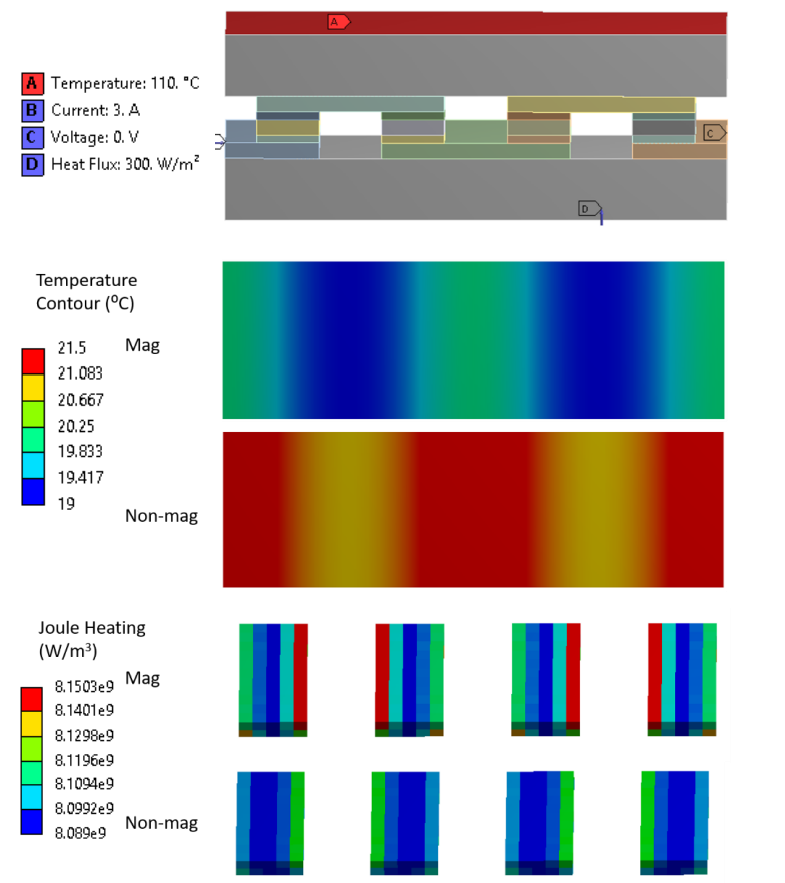Project Background
With the advancement of electronic system, the ever-increasing power and power density makes it a great challenge for thermal management. Traditional cooling system involves fluid system, which will introduce distribution challenges as well as vibration concerns. One possible solution is thermoelectric cooler (TEC), which has no moving parts but also very efficient for local hotpot cooling.
Physical Theories Before Engineering
Physics comes first
Our team is very detail-oriented, and always start with basic science behind the scene. For TEC, we use the governing equation to guide numerical simulations and prototype design in terms of material selection and dimension optimization.
Localized Multiphysics Modeling
Local Module Simulation
It always starts with unit cell before it can be scaled up for integrated performance. To guide prototyping, our team first investigated how local TEC module works using multiphysics modeling considering both electrical and thermal design. Once local module has been optimized, it can be easily scaled up with very predictable performance.
Entire System Integration
Global Model Simulation
The complete cooling system consists more than TEC modulus, it also involves coolant flow path. The global model is built for final flow and thermal performance visualization. It provides great localized insight for both aspects. The tradeoffs have been balanced for optimal designs.
Magic TEC Superpower
Optimal Performance (Electrical, Thermal, Fluid, Structural)
The best system needs to have delicate balance among different systems. From our numerical simulation, we try to investigate the whole picture from thermal hotspot remedy to optimal current setting.
Structural Reliability Analysis
Mechanical Modeling
In actual assembly process, it’s critical to perform tolerance analysis to ensure every component can be seamlessly integrated together. Based on client’s requirement, we also provide stress and deformation evaluation for the entire system.




